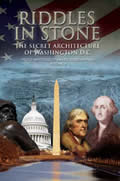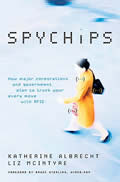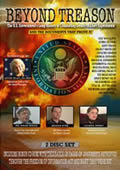ABUSE
OF FORCE
PART 1 of 3
By Jon Christian Ryter
July 10, 2008
NewsWithViews.com
Two very public stun gun incidents in September, 2007 caused ABC News to raise the question that should have been asked long before that day: "Are cops using Tasers too often?" (Quote from ABC News article, Sept. 21, 2007) ABC News reported that on Mon., Sept. 10, 2007 deputies from the Orange County, California Sheriff's Department shocked a 15-year old old autistic boy with 50 thousand volts of electricity because he was "acting suspicious," but without doing anything violent. Deputies found 15-year old Taylor Karras, who disappeared while attending a counseling session at the Orange County Regional Center in Westminister, was reported pushing a shopping cart down Newport Avenue. Police were asked to find the autistic boy by his mother, Doris Karras. Thus, the police knew the "subject" was a 15-year old with diminished capacity even though he stood 5'10" and had a beard. Karras told the Los Angeles Times that had the police officers spoken to her son in a non-threatening manner, he would have followed their directions without question or hesitation. A pedestrian spotted Taylor Karras 16 miles from the clinic in Tustin. The pedestrian called the Tustin police department to report a "suspicious" person. The Tustin police called the Sheriff's office which responded.
A spokesman for the Sheriff's Department, Jim Amormino, told ABC News "...the use of the Taser was definitely justified. The deputy had two seconds of contact with the suspect before he started screaming and running into traffic. If he hadn't been Tasered, he could easily have been killed by a car. The suspect, the officers, drivers on the road and pedestrians all could have been at risk if the suspect continued into traffic." Amormino said deputies were justified because when the officers commanded him to stop, Karras purportedly yelled something back at them and ran across Newport Avenue. Lost on Amormino in his justification to use a stun gun on a mentally challenged boy who posed no physical threat to anyone was the fact that stun guns are supposed to be an alternative to deadly force in subduing subjects who pose a deadly threat to law enforcement officers.
That same evening a University of Florida senior, Andrew Meyers (who was described by frequent Fox News guest correspondent Michelle Malkin as a "goofball," a celebrity-taunter and a YouTube publicity hound who was seeking his YouTube moment in history), staged his own date with the stun gun after Meyers grabbed a microphone in a roomful of people listening to Sen. John Kerry [D-MA] in order to ask the Senator a series of questions designed to provoke him—and campus police. Meyers wantd to know whether or not Kerry had ever been a member of Yale's Skull & Bones secret society. In Meyer's case, because he brought along his own videographer, we know he staged his own assault by campus police in order to achieve his own very painful 15-minutes of fame.
On Tuesday as Meyers was making YouTube fame pleading with campus police not to use the stun gun on him, University of Florida president J. Bernard Machen called the incident, and the arrest, of the college senior "regretful." Machen launched a university inquiry and asked the Florida Highway Patrol to investigate the justification of the campus police to use a stun gun on a student who simply refused to surrender a microphone. Like ABC News I found both stun gun assaults—and they were assaults—troubling.
Pulse technology energy weapons (stun guns) are dangerous even when used properly (which very few, if any, police departments do). Stun guns today are rapidly becoming "gender equalizers" for the "weaker sex" to deal with unruly men who are larger and stronger than they are. No police officer anywhere knows the health of any person they accost, and whether that person has a cardiac condition or some other health problem that would be aggravated by an electrical charge from a stun gun. Which means there is always a chance that a stun gun encounter can be lethal for a person who is pulsed—particularly when he or she receives several jolts. Stun guns are deadly weapons. They are substitutes for deadly force. Theoretically, that's why they were developed and put into use. Dropping a life-threatening, or bodily injury-threatening suspect with an electrical charge is better than dropping him with a 9mm slug.
According to the Taser™ website, their pulse weapons were designed to "...incapacitate dangerous, combative, or high-risk suspects who pose a risk to law enforcement officers..." and is "...a safer alternative to other uses of force." Most of the police agencies which use them abuse them. Stun guns were not designed to subdue 15-year autistic boys, nor were they designed to subdue college seniors who ask embarrassing questions to politicians.
On Thursday, Dec. 20, 2007, Christmas shopper Elizabeth Beeland, a 35-year old yoga instructor in Daytona Beach, Florida was questioned by a checkout clerk at Best Buy for using what the clerk described as a "suspect" credit card. The credit card was Beeland's. Embarrassed because she thought she was being accused of using a fraudulent credit card, Beeland began screaming at the clerk. The store surveillance videos show Beeland antagonistically confronting the clerk, with arms flaying. After Beeland turned and walked away from the checkout, off-duty, uniformed Daytona police officer Claudia Wright approached the departing customer and without any sign of resistance or provocation from Beeland, used her "gender-equalizer" and shot Beeland in the abdomen with her stun gun, knocking her to the floor. Wright defended her action saying Beeland had been "verbally profane, abusive, loud and irate." Since when did loud and obnoxious become grounds for using deadly force? (Everyone—the police agencies which use them, the media that reports on the use and abuse of stun guns, the legal system and the general public—need to understand that since 337 people in the United States and Canada have died in stun gun incidents, it is potentially a lethal weapon that is used on people for crimes as minor as not moving fast enough when ordered by a police officer.)
Beeland, whose crime was cursing at a Best Buy clerk who embarrassed her, was charged with misdemeanor charges of disorderly conduct and resisting arrest. Daytona Beach city fathers would have been hard-pressed to make the resisting charge stick since Best Buy's surveillance video showed there was no confrontation with Wright, nor did Beeland resist. Wright, who was clearly out of her element, simply pulsed Beeland. I wonder how much Best Buy paid Beeland to settle what could have been a whopper of a lawsuit?
Furthermore, if the City of Daytona Beach was wise, they would either fire Wright or permanently put her on a desk. The American Civil Liberties Union joined the Florida fray after Daytona Beach police chief Michael Chitwood defended Wright's action. This was the first time the Daytona Beach police used a stun gun on a "subject" who was not confronting the police officer nor resisting arrest. Most certainly, if Wright is not fired, stun gun use will probably become more commonly used in Daytona Beach as a gender-equalizer.
When Milwaukee, Wisconsin armed their police force with 14 brand new Taser™ pulse weapons in March, 2004, their officers used it 105 times in the first 106 days—from March 16 to July 31—which amounts to once a day. Milwaukee police sergeant Mike Kuspa explained that "[w]hen officers have a new tool, they will use that tool more than any other tool they have on their belt as long as it fits the guidelines."
Statistics show that 96% of those shot with the stun guns were not armed and posed no deadly threat to police. Seventy percent of those struck by the pulse weapons were injured. In Milwaukee, according to Kuspa, the stun gun is an alternative to pepper spray. Yet, where Taser™ calls their pulse weapon "non-lethal," the Milwaukee police refer to it as "less-lethal" because the city can't be sure of the company's claim. "It could be lethal," he said. "May or may not."
Few restrictions in the use—or abuse—of stun guns by police officers are imposed on them by their respective municipal, county or State governments according to the American Civil Liberties Union. In their state-by-state investigation of stun gun abuse, the ACLU did an exhaustive study of how police departments regulate the use of stun guns, and the frequency in which victims of stun gun abuse die at the hands of police officers for "crimes" as minor as making chubby cops chase them. When the death rate from what should have been non-lethal stun gun incidents—and the potential for lawsuits for wrongful death—began to rise throughout the nation, county coroners devised the medical diagnosis of "excited delirium" to explain how otherwise apparently healthy people could die from a non-lethal electrical charge. Since many of those who are stunned are drug abusers, many die from complications due to pharmacological intoxication and electrical shock. Some coroners attribute stun gun deaths to positional, or postural, asphyxia. Death results when the subject collapses into a breathing restrictive position—usually when the subject falls in a face-down position. Coroners, who realize the financial liability to their counties if death is attributed to electrical shock are reluctant to inscribe those words on the death certificates of those who succumb after being pulsed with a stun gun.
|
Subscribe to the NewsWithViews Daily News Alerts! |
In Nov., 1993 47-year old James Borden was arrested by Monroe County, Indiana sheriff's deputies when they found him wandering aimlessly in a drug-induced stupor. Borden was transported to the county lockup without incident. He died in the jail because he was "dry-stunned in the buttocks" by a jailer because, he said, "...I asked Borden to lift up his foot to remove his shorts, but he was being combative and refused. I dry-stunned him in the lower abdomen. We got [him] to the booking area. Borden was still combative and uncooperative. I dry-stunned [him] in the buttocks." After the second the jolt, the jailer noticed that Borden was no longer responsive, and his face was discolored. He was dead. His capital offense? Being on drugs and not stripping fast enough to suit the jailer. The coroner listed a multiple choice cause of death: heart attack due to an enlarged heart, pharmacological intoxication, and electrical shock. The jailer was charged with two counts of felony battery and battery while armed with a deadly weapon. For part two click below.
Click here for part -----> 1, 2, 3,
� 2008 Jon C. Ryter - All Rights Reserved
[Read "Whatever Happened to America?"]














